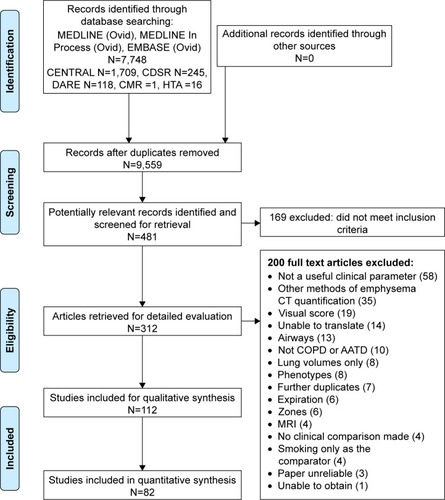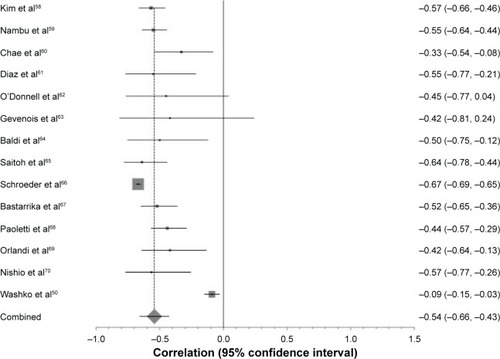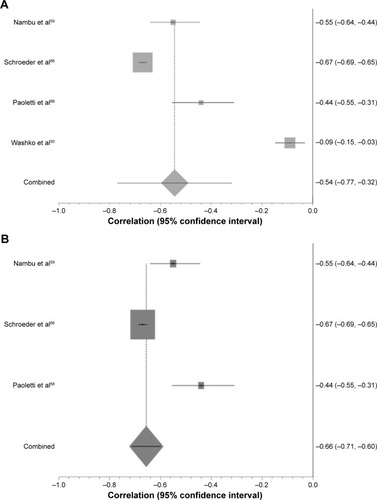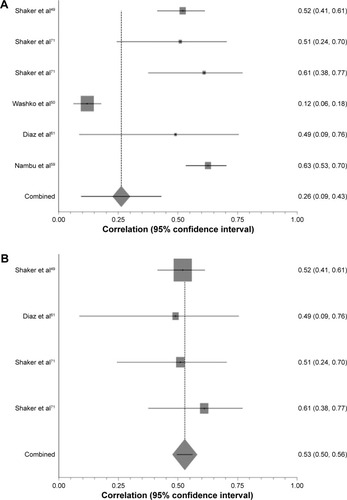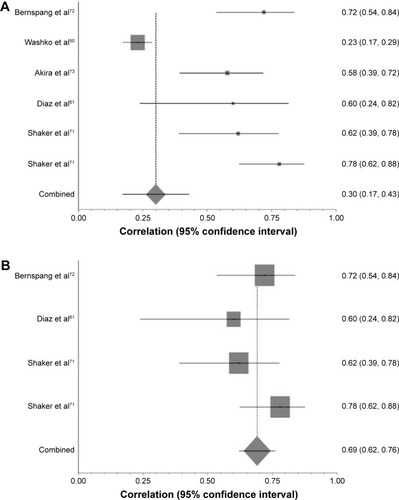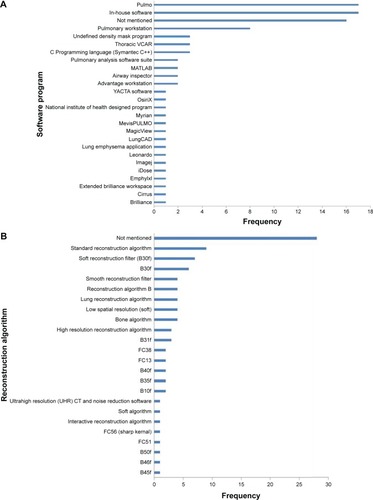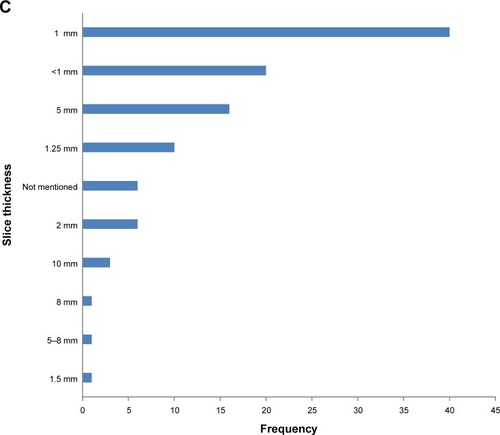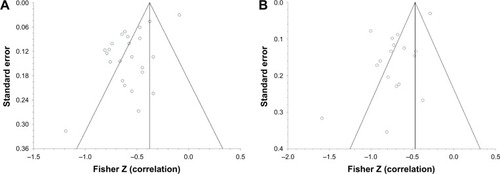Figures & data
Table 1 Summary of all studies included in meta-analyses
Table 2 Summary of meta-analyses performed on all studies using Pearson’s correlation coefficient to compare FEV1 and FEV1 percent predicted with CT density
Table 3 Summary of studies that performed multivariate linear regression analyses to examine the relationship between FEV1 and CT density
Table 4 Summary of studies comparing FEV1/FVC with CT density, divided up in to the most commonly reported thresholds
Table 5 Studies subdivided into density parameter used, which compares gas transfer to CT measured density
Table 6 Summary of studies that correlated CT density with SGRQ
Table 7 Summary of studies that compare BODE and MRC with CT density, subdivided into univariate or multivariate models used
Table 8 Studies reporting an all-cause mortality HR for emphysema as defined by CT density
Table 9 Summary of papers describing the association between CT density and exacerbations, subdivided into the risk of exacerbations from a low density score, and the impact exacerbations have on CT density decline
Table 10 Summary of the risk of bias assessment
